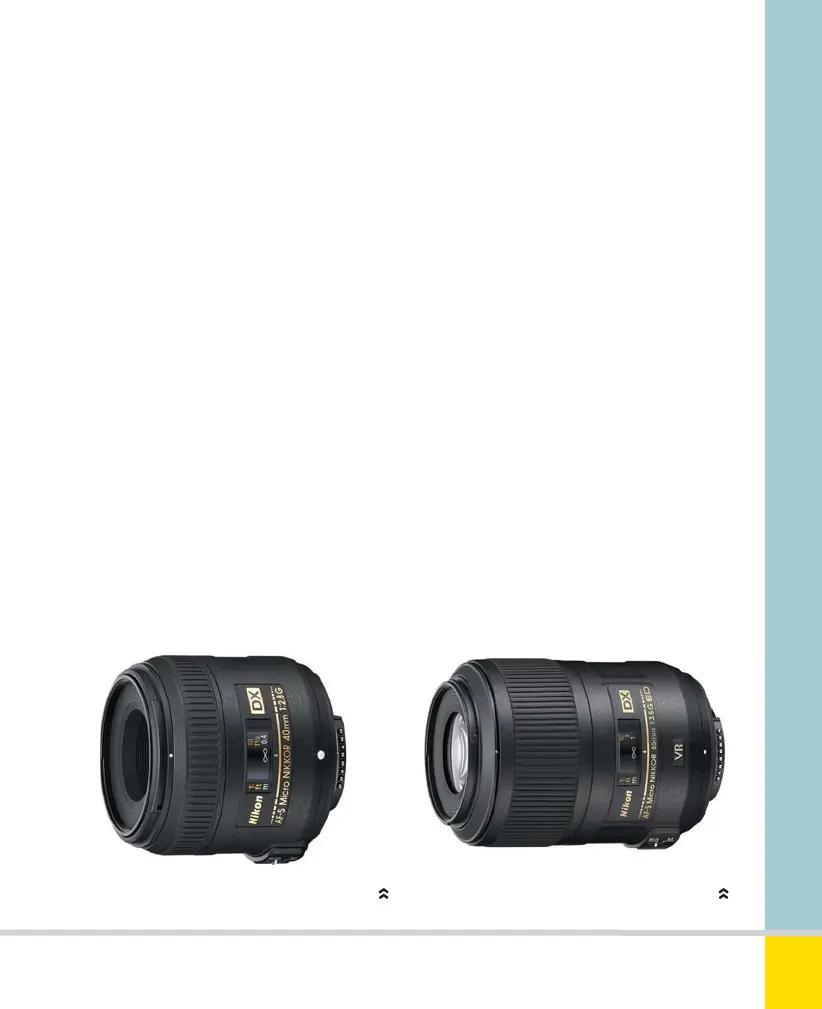Free ebooks ==> www.ebook777.com
165
THE EXPANDED GUIDE
CLOSE-UP
»
EQUIPMENT FOR MACRO PHOTOGRAPHY / MACRO LENSES
»
MACRO LENSES
True macro lenses achieve reproduction
ratios of 1:1 or better and are optically
optimized for close-up work, though
normally very capable for general
photography too. This is certainly true of
Nikon’s Micro Nikkor lenses, of which there
are currently five.
The most recent addition to the range
is the 40mm f/2.8G AF-S DX Micro
Nikkor; like the 85mm model (below) it’s
specifically designed for DX format
cameras like the D5300. It’s also Nikon’s
lightest, and least expensive, macro lens.
Be aware, however that its working
distance at 1:1 reproduction ratio is just
6.3in. or 16cm, leaving very little room
between the subject and the front of
the lens.
The 60mm f/2.8G ED AF-S Micro
Nikkor is an upgrade to the previous
60mm f/2.8D. Advances include ED glass
for superior optical quality and Silent Wave
Motor for ultra-quiet autofocus.
The 85mm f/3.5G ED VR AF-S DX
Micro Nikkor also achieves 1:1
reproduction and has VRII, internal
focusing, and ED glass.
The 105mm f/2.8G AF-S VR Micro
Nikkor also features internal focusing,
ED glass and Silent Wave Motor; it was
also the world’s first macro lens with VR
(Vibration Reduction).
Though rather more venerable, the
200mm f/4D ED-IF AF Micro Nikkor
is particularly suitable for shooting the
animal kingdom, as its longer working
distance reduces the risk of disturbing
your subject. This lens lacks a built-in
motor and so can’t autofocus with the
D5300; this can be an issue when shooting
lively animals, but it’s not a problem when
shooting static subjects.
40MM F/2.8G AF-S DX MICRO NIKKOR
85MM F/3.5G ED VR AF-S DX
MICRO NIKKOR
Nikon D5300 Ch5 158-167 P2 RY.indd 165Nikon D5300 Ch5 158-167 P2 RY.indd 165 19/02/2014 16:5819/02/2014 16:58
www.ebook777.com

